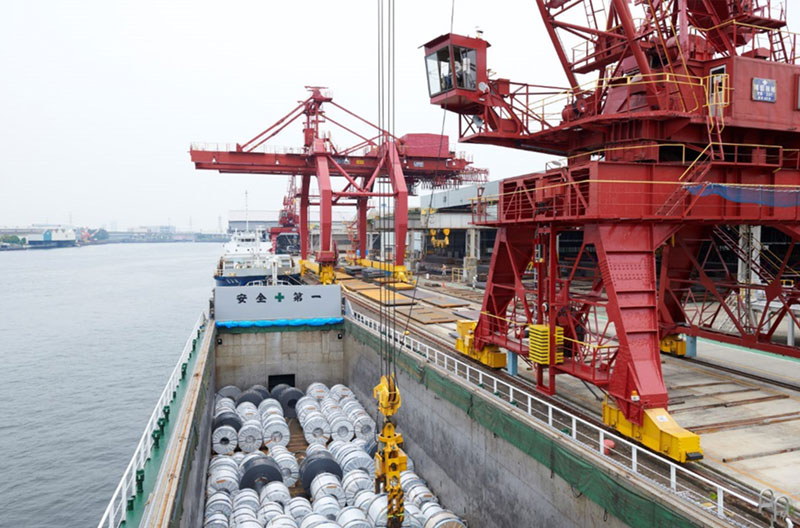

On consignment from Kobe Steel, we accept shipments for the ports of Kobe (Kobe Wire Rod & Bar Plant Wharf) and Higashi-Harima (Kakogawa Works Wharf), where we unload iron ore, coal, and other such materials from ocean-going import vessels. We also load steel products and other such materials onto ocean-going vessels, supervise wharf operations, and provide transport via barge, offering a full range of multimodal harbor transport operations.
Upon consignment from shipping companies, we load construction machinery slated for export onto RORO self-propelled steamers and steel products at the Port of Higashi-Harima’s Shinjima Quay. At the Port of Kobe, we handle imports and exports of cargo in marine shipping operations.
We also conduct port transportation that accounts for the various characteristics of the ports of Amagasaki Nishinomiya Ashiya, Osaka, and Chiba.
To handle transportation in these ports, we have created unloading and loading duty plans. These plans are efficiently and steadily executed by highly capable human resources, including foremen charged with monitoring general loading and unloading operations and overseeing employee placement and organization as well as crane operators, who carry out highly specialized loading and unloading operations safely and quickly.
Case 1
Steel raw materials used at steelworks, such as iron ore and coal, are imported from Australia, Brazil, and other locations via specialized vessels. Our large-scale loading and unloading machinery (unloaders) can fully unload a large ship, which can carry up to 200,000 tons of iron ore, in around 5 days. This ore is then transported to raw material yards via conveyor belt, a process that maximizes the efficiency of the steelworks.
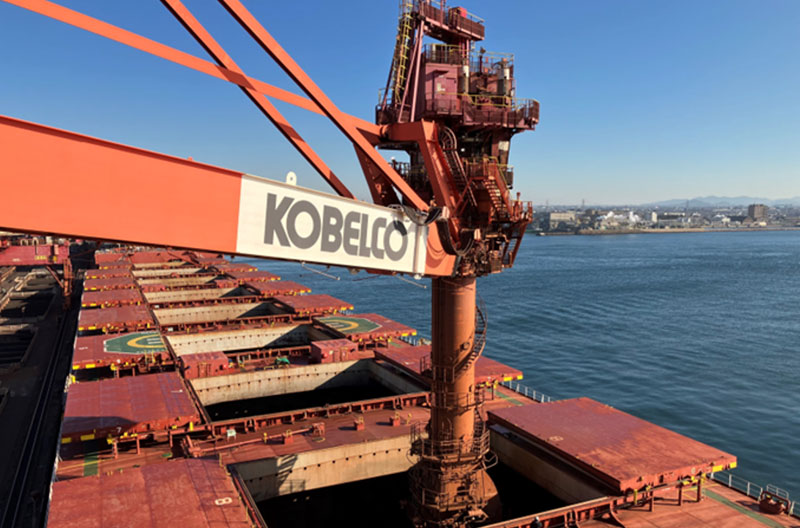
Case 2
We carry out loading operations for iron and steel products built by the Kakogawa Works to be shipped domestically and abroad.
Based on loading systems that thoroughly support steelworks’ stable operations and quality control, we vigorously strive to improve efficiency and workplace environments from a variety of aspects. For example, we have installed cameras on hanging equipment to eliminate the need for personnel to enter ship cargo holds for inspection, improving the safety and ease of workplace environments.
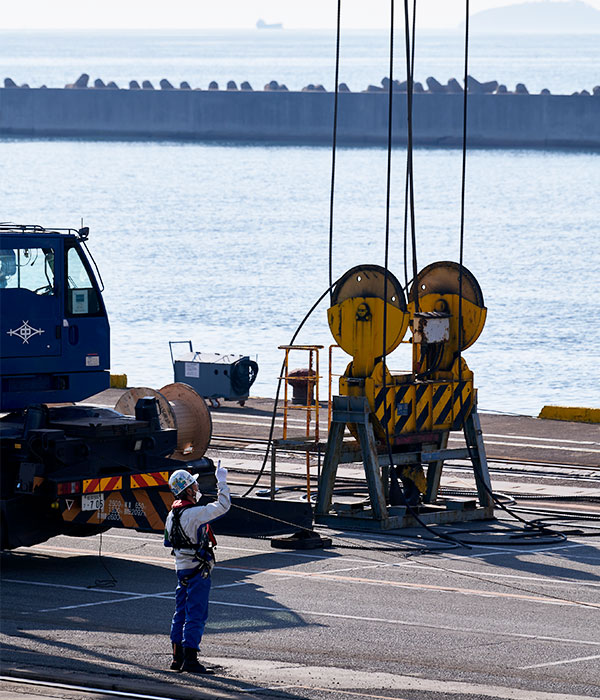
Case 3
As the prime contractor for loading steel products for export by ocean-going vessel at the Port of Kobe, we have formulated a comprehensive system delegating responsibility for the supervision of loading by partner companies.
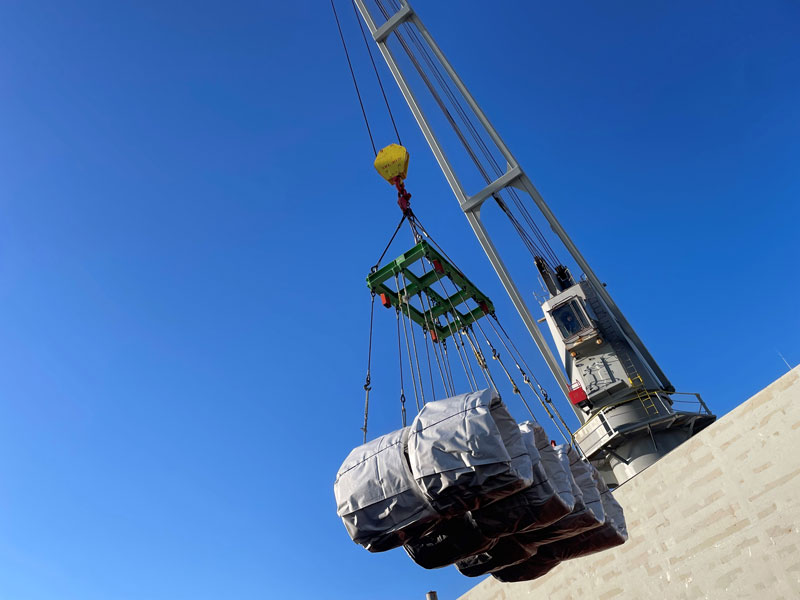
Case 4
At the Kansai Logistics Center (Amagasaki), we use domestic vessels to unload cargo transported by sea from Kakogawa Works and the Kobe Wire Rod & Bar Plant once the vessels pass through the locks at the Port of Amagasaki, then store the unloaded goods in our cargo terminals until the date and time specified for further shipment.
As the prime contractor for loading and unloading cargo for import or export by ocean-going vessel at the Port of Amagasaki Nishinomiya Ashiya, we have formulated a comprehensive system delegating responsibility for the supervision of loading and unloading by partner companies.
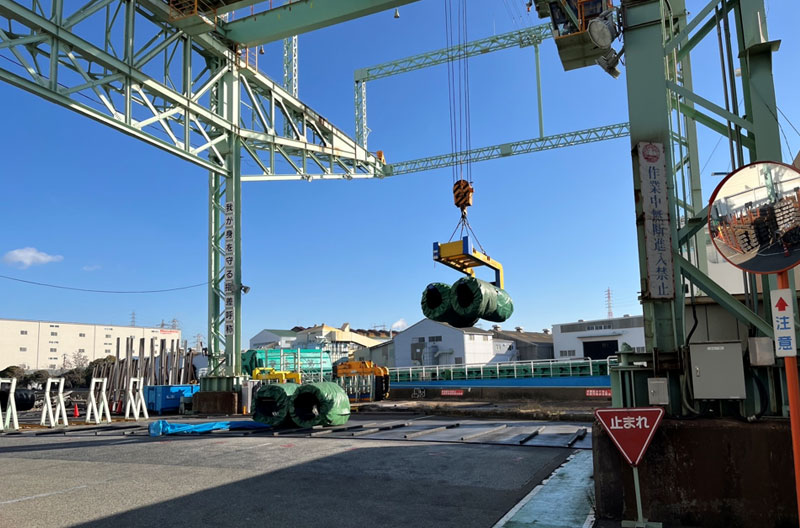
Case 5
At the Kansai Logistic Center (Osaka)’s location in the southern section of the Port of Osaka, we use domestic vessels and barges to unload steel sheets (coils) and heavy plates transported by sea from the Kakogawa Works, storing the unloaded goods in our cargo terminals until the date and time specified for further shipment.
As the prime contractor for loading steel for export by ocean-going vessel at the Port of Osaka, we have formulated a comprehensive system delegating responsibility for the supervision port transport by partner companies.
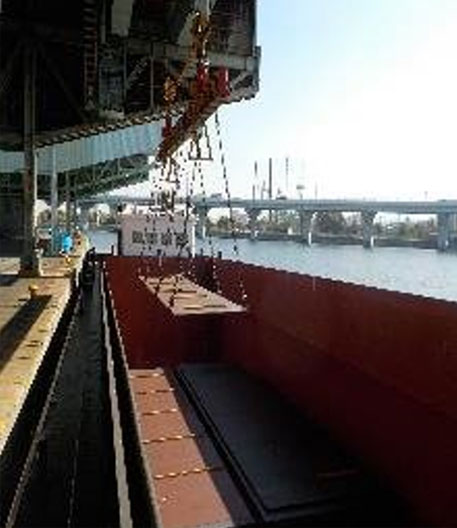
Case 6
An the Kanto Logistics Center’s location in the Port of Chiba (Ishikawa City), we use coastal vessels to unload all sorts of steel products transported by sea from the Kakogawa Works, Takasago Works, and the Kobe Wire Rod & Bar Plant, storing the unloaded goods in our cargo terminals until the date and time specified for further shipment.
